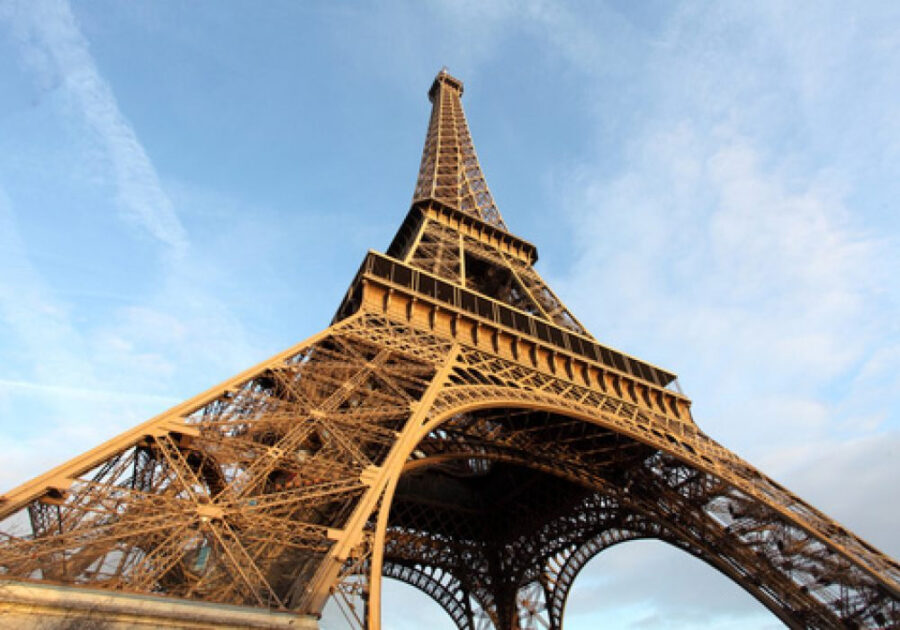The challenges of creatives in app install
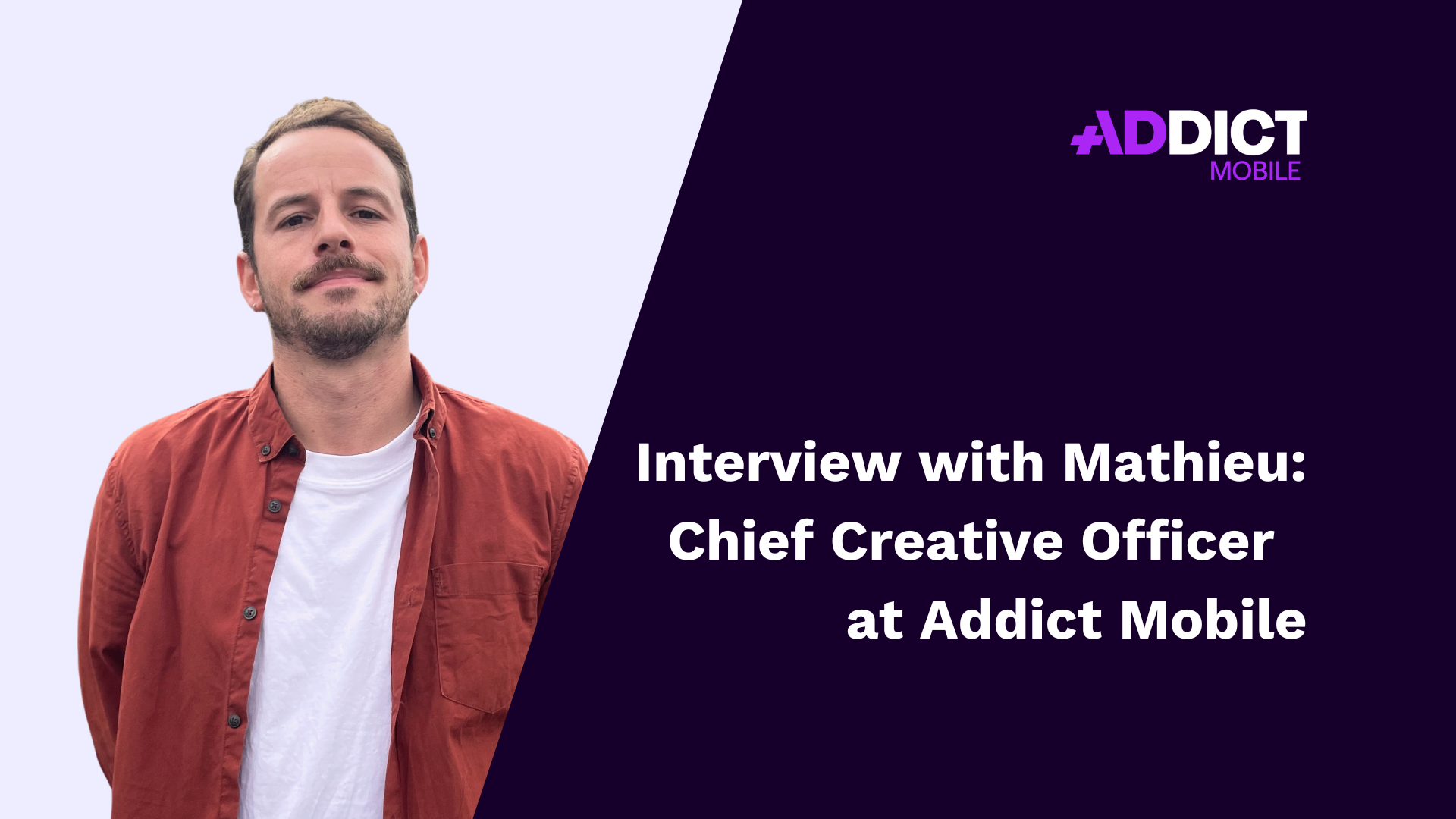
Creativity is a key element of any user acquisition strategy. Mastering all the challenges related to the sector and deploying the necessary resources to meet the needs of variations, translations, localization, etc. is now essential for a successful app strategy.
Meet Mathieu Colard, Chief Creative Officer at Addict Mobile. Having joined the company 8 years ago at its inception, he has witnessed all the developments, from the game studio to the startup specializing in user acquisition, and now the leader in performance-based mobile marketing. He now leads a team of 12 motion designers.
What is the creative production at Addict Mobile?
Our job is to create visuals for our campaigns, with a focus on performance. Indeed, beyond the creative aspect, the visuals must deliver results, and we must be able to identify what works. This involves a large volume of production to then test and direct our approach towards what proves to be most effective. It’s a constant renewal because trends and the effectiveness of creatives are very ephemeral.
How has it evolved since your arrival?
In 8 years, the creative aspect of acquisition has gone through many phases. Before, we only produced static visuals where we modified colors, buttons, backgrounds, etc. Today, expectations have evolved significantly, and the codes are no longer the same.
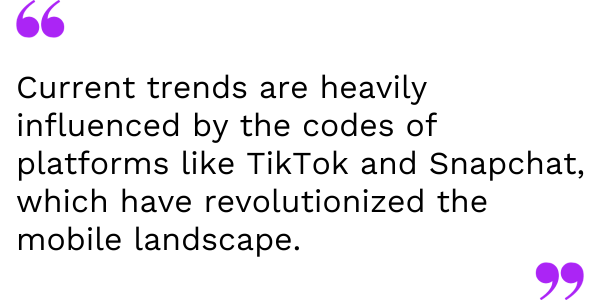
Current trends are heavily influenced by the codes of platforms like TikTok and Snapchat, which have revolutionized the mobile landscape, especially with the rise of UGC formats. On Facebook and Instagram as well, where stories are now favored over the feed. The presence of many creators on these platforms constantly brings about new changes that require elevating the graphic and visual level of ads to adapt to this ecosystem.
At the same time, the growing maturity of advertisers in user acquisition implies expectations that did not exist six years ago.
All of this pushes us to produce much more polished visuals, whether video or static, challenging basic concepts.
How is the creative studio organized at Addict Mobile?
The team is made up of 12 graphic designers, most of them senior.
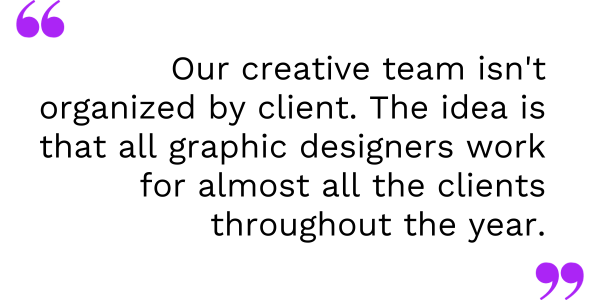
Our creative team isn’t organized by client. The idea is that all graphic designers work for almost all the clients throughout the year. Moreover, they are all very autonomous in their proposals, although we have set up internal validation steps with the Art Director and myself before any launch.
Twice a month, we hold meetings to evolve as graphic designers but also as acquisition professionals: identifying trends, visual tricks, transitions. We have two leads dedicated to this, who present elements they have found interesting visually or in terms of narration. The idea of these meetings is really to find inspiration, discover new things, open minds, etc.
We also have two beta-testers who work closely with the tech team to develop solutions beneficial to the creative team. For example, identifying tasks that don’t require graphic skills and can be automated or accelerated to free up time. This allows the team to focus on creativity, proposing innovative concepts, and acquisition challenges.
How does the creative aspect allow Addict Mobile to stand out and be more competitive in the market?
What sets us apart is, first and foremost, Addict Mobile’s origin. We come from the world of publishers, so generating performance is second nature to us. These origins are reflected in how we approach creative challenges. We don’t focus on branding; instead, we aim to generate downloads and revenue by meeting the specifications of the platforms where we advertise. This vision changes the way we approach creation.
The experience gained over the past 8 years with more than 650 different app projects is another differentiating factor from some players.
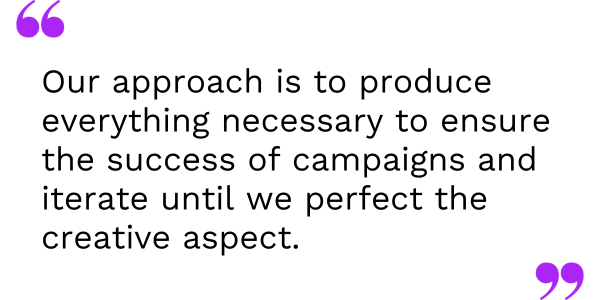
Finally, the inclusion of this creative service in our UA offering and not charging separately for it is a particularly important element for us. We know it’s a key element for the success of campaigns, so this service doesn’t incur additional costs at Addict Mobile. Our approach is to produce everything necessary to ensure the success of campaigns and iterate until we perfect the creative aspect.
With creativity becoming THE performance lever within acquisition campaigns, how are you organized to manage the constant demand for visual production?
The need to produce abundantly and adapt to all platforms, languages, countries, formats, etc., especially for advanced A/B testing strategies, has led us to deploy technologies embedded in our software. These tools, developed by our tech teams, allow us to adapt formats, translate and iterate automatically, in high volumes and in all languages. It’s a real game-changer for our teams.
We have also implemented technology to meet the needs of clients requiring the highlighting of “hot” information. These apps require immediacy and prioritize content over creatives. In this case, our graphic designers create a template based on an already tested and successful visual, which is then transformed into an editable and dynamic model where content is added automatically. The ads are then automatically posted on Facebook based on predefined countries, targeting, and other criteria. Examples include Le Parisien for news, Weatherbug for weather updates, or Besoccer for football match announcements, all automatically launched on Thursday nights.
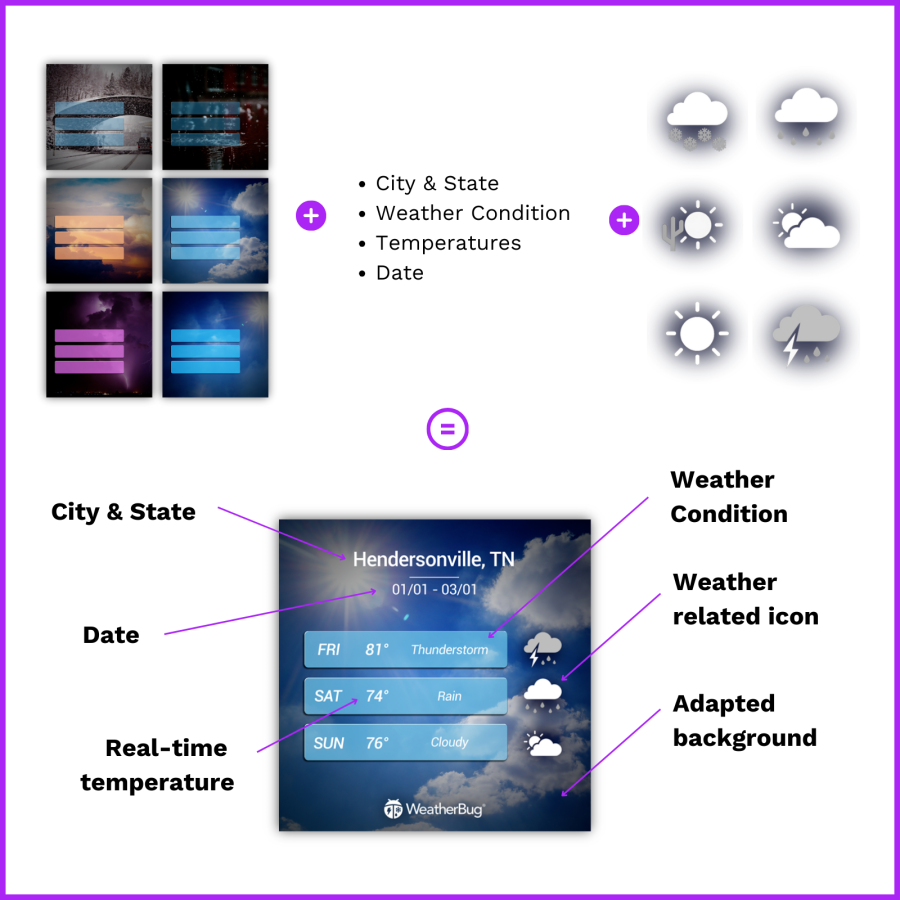
What are the main challenges that the creative teams face on a daily basis?
The daily challenges we face include the constant need for renewal, not resting on our laurels, and always seeking to develop new skills.
We’re fortunate to have long-term clients, but on the human side, with intensive production, fyou can quickly run out of steam. That’s why, as I mentioned earlier, no graphic designer has a dedicated client portfolio. The whole team works on all clients to bring in new ideas because over time, finding concepts that haven’t been previously tested becomes a real challenge.
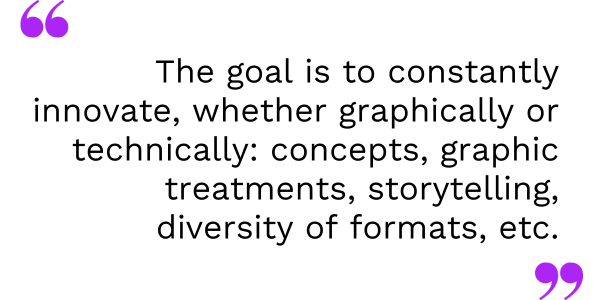
The goal is to constantly innovate, whether graphically or technically: concepts, graphic treatments, storytelling, diversity of formats, etc. It’s always about thinking about what we haven’t done yet to come up with innovative and new ideas that will help us achieve better performance.
Improving technically is also a challenge we encounter. Even in the less creative and more time-consuming tasks, teams are encouraged to acquire new skills.
Speaking of renewal, how do you and your team stay ahead of the creative curve and anticipate future trends and best practices to stay one step ahead?
User Acquisition is an ecosystem that’s constantly evolving, with trends emerging every day and others stopping abruptly. To address this challenge, we work daily with operational teams and exchange ideas during dedicated meetings or brainstorming sessions to be reactive and relevant in our proposals.
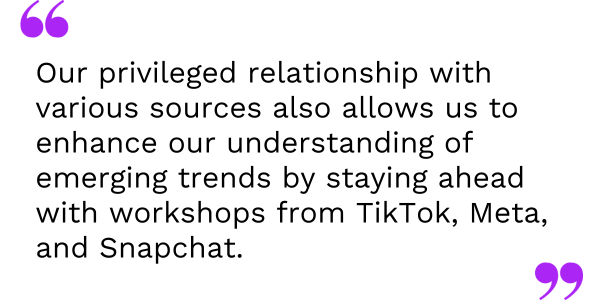
Ongoing monitoring is also a key component of our strategy. This involves regularly studying platforms to stay updated on the latest trends. We also draw inspiration from real-life experiences, marketing and graphic design websites, and Adobe talks. Our privileged relationship with various sources also allows us to enhance our understanding of emerging trends by staying ahead with workshops from TikTok, Meta, and Snapchat.
Our approach is based on curiosity, maintaining a fun environment, and a willingness to test bold ideas outside the box. It’s this combination of elements that allows us to anticipate changes.
What are the new trends that you have recently identified or anticipate in creative User Acquisition?
In the past two years, we’ve witnessed the explosion of UGC, a playground that offers a huge range of possibilities, whether in collaboration with external creators or internally. Today, it’s still a very raw product, which I believe is not going to disappear anytime soon but will evolve and refine over time.
Then, of course, the topic that everyone has been buzzing about lately is AI, which will evidently shake up our way of working. Recently, Adobe unveiled several AIs, such as Firefly, as well as those integrated into Photoshop and Illustrator. These tools, still in their early stages, already offer exciting prospects.
It’s a topic we are already following and addressing at Addict Mobile. Personally, I see it as a new opportunity to express our ideas even more and not as a replacement for creativity itself.
NEWS
Article in relation
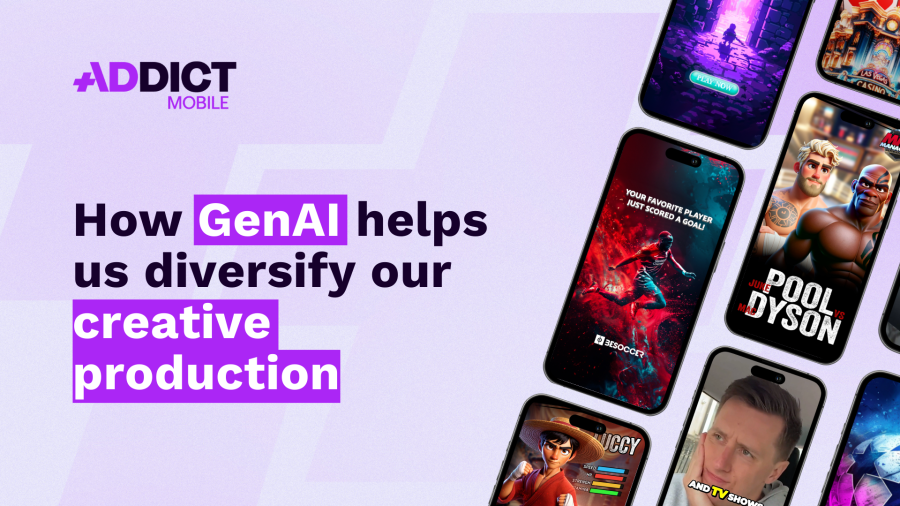
UA: How GenAI helps us diversify our creative…
-5% CPI, +23 points ROAS, GenAI creatives are increasingly becoming a performance driver for apps. When combined with a traditional approach, they allow...
Published on 8 July 2024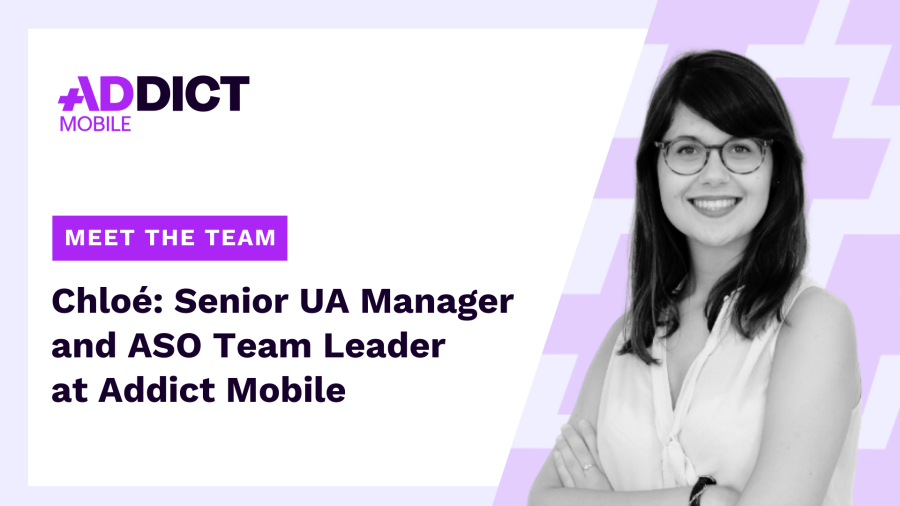
Interview with Chloé Morant, Senior UA Manager and…
Meet Chloé, Senior UA Manager and ASO Team Leader at Addict Mobile. She joined in 2021 as a UA Manager and is now...
Published on 11 June 2024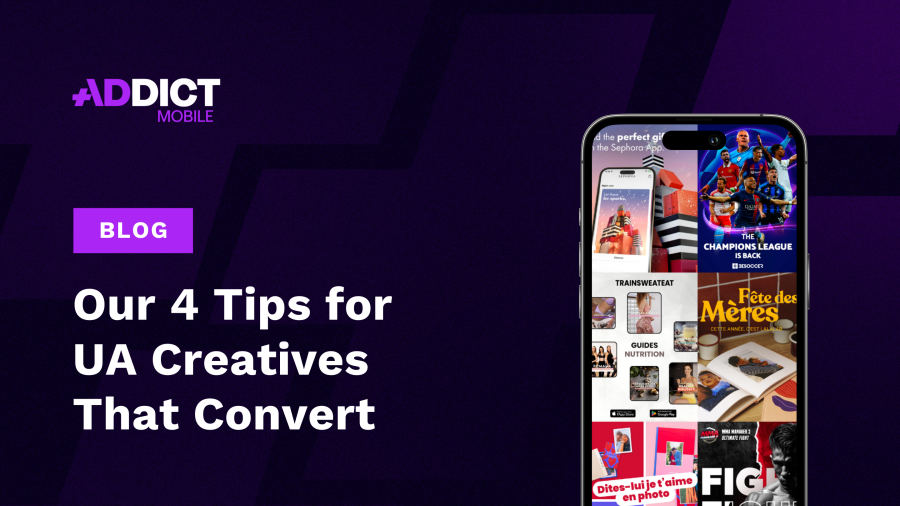
Our 4 Tips for UA Creatives That Convert
We cannot emphasize enough: creativity is crucial for the success of user acquisition campaigns. It’s an essential element that can greatly impact performance...
Published on 20 May 2024